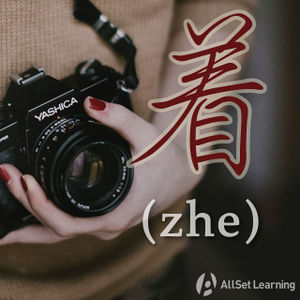Difference between revisions of "Alternative existential sentences"
| Line 37: | Line 37: | ||
Note when using existential sentences, you are describing an object's existence in some place or location. Also, when using 有 and 是, note that 是 is used to describe a singular, or one object existing somewhere while 有 can refer to multiple objects/ people. | Note when using existential sentences, you are describing an object's existence in some place or location. Also, when using 有 and 是, note that 是 is used to describe a singular, or one object existing somewhere while 有 can refer to multiple objects/ people. | ||
| + | |||
| + | ==See Also== | ||
| + | |||
| + | *[[Indicating location with "zai" before verbs]] | ||
| + | *[[Special cases of "zai" following verbs]] | ||
| + | *[[Expressing existence in a place with "zai"]] | ||
| + | |||
| + | ==Sources and Further Reading== | ||
| + | |||
| + | ===Books=== | ||
| + | |||
| + | * [[Integrated Chinese: Level 1, Part 1 (3rd ed)]] (p. 128) [http://www.amazon.com/gp/product/0887276385/ref=as_li_ss_tl?ie=UTF8&tag=allset-20&linkCode=as2&camp=217145&creative=399369&creativeASIN=0887276385 →buy] | ||
| + | * [[Integrated Chinese: Level 2, Part 1]] (p. 191) [http://www.amazon.com/gp/product/0887276792/ref%3das_li_ss_tl?ie=UTF8&tag=allset-20&linkCode=as2&camp=217145&creative=399369&creativeASIN=0887276792 →buy] | ||
| + | * [[Integrated Chinese: Level 2, Part 2]] (pp. 264, 325)[http://www.amazon.com/gp/product/0887276881/ref=as_li_ss_tl?ie=UTF8&tag=allset-20&linkCode=as2&camp=1789&creative=390957&creativeASIN=0887276881 →buy] | ||
| + | * [[New Practical Chinese Reader 4 (新实用汉语课本4)]] (pp. 40-1, 164-5, 185) [http://www.amazon.com/gp/product/7561913192/ref%3das_li_ss_tl?ie=UTF8&tag=allset-20&linkCode=as2&camp=217145&creative=399369&creativeASIN=7561913192 →buy] | ||
{{Basic Grammar|Existential Sentences|B1|grammar point|ASGVYIZT}} | {{Basic Grammar|Existential Sentences|B1|grammar point|ASGVYIZT}} | ||
{{Used for| Describing the existence of an object in a certain location or place}} | {{Used for| Describing the existence of an object in a certain location or place}} | ||
{{POS|Prepositional Phrase}} | {{POS|Prepositional Phrase}} | ||
Revision as of 08:02, 29 September 2016
| This article is a stub. Editors can help the Chinese Grammar Wiki by expanding it. |
-
Level
-
Similar to
-
Used for
-
Keywords
Existential sentences are used to express an object's existence in a certain place or location. The word order is a little different from that of a regular Chinese sentence, but this is still a pretty useful grammar point as existential sentences express everyday things, like "there is a book lying on the desk," and similar phrases.
Typically, Chinese sentences contain the SVO or STPVO word order, but existential sentences have their own order.
Structure
Place word/phrase + verb + 了/着 + numeral + measure word + noun
Examples
- 桌子上着一本书。 There is a book lying on the table.
- 在电影院的椅子上坐着几个人。 Some people are sitting in the chairs in the movie theater.
- 在柜子里挂着一些衣服。 There are some clothes hanging inside the closet.
Existential sentences have three kinds of verbs: 有 (yǒu), 是 (shì), and verbs that express bodily gestures or actions like 拿 (ná).
Examples
- 洗衣机里有一些衬衫。There are some shirts inside the washing machine.
- 书桌上是一个手机。On the desk is a cellphone.
Note when using existential sentences, you are describing an object's existence in some place or location. Also, when using 有 and 是, note that 是 is used to describe a singular, or one object existing somewhere while 有 can refer to multiple objects/ people.
See Also
- Indicating location with "zai" before verbs
- Special cases of "zai" following verbs
- Expressing existence in a place with "zai"
Sources and Further Reading
Books
- Integrated Chinese: Level 1, Part 1 (3rd ed) (p. 128) →buy
- Integrated Chinese: Level 2, Part 1 (p. 191) →buy
- Integrated Chinese: Level 2, Part 2 (pp. 264, 325)→buy
- New Practical Chinese Reader 4 (新实用汉语课本4) (pp. 40-1, 164-5, 185) →buy



